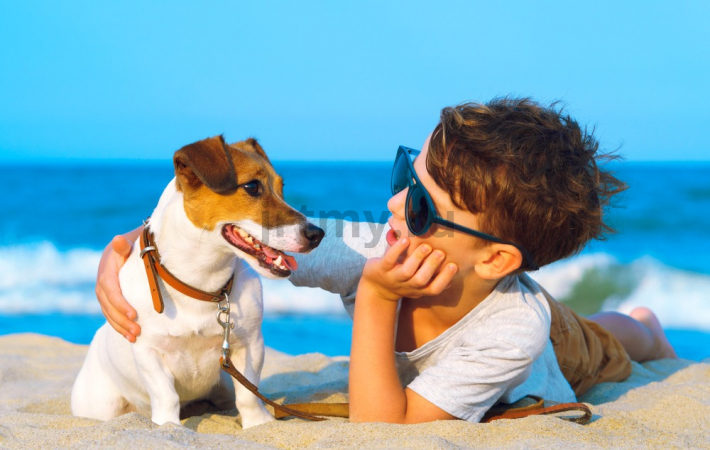Children and dogs
Children and dogs
One of the most important tips: if you have children under the age of 6 in your family, try to always be present when the child and the puppy are playing.

Simply because it is difficult to explain to children of this age how to behave with Jack and how not to. For a child it is just a little soft toy, which you want to carry in your arms, drag by the tail, causing a pleasant squeak, dress him up and swaddle him like a doll, roll him in a stroller. Despite his deceptively small size and defenseless, smile-inducing appearance, Jack is a proud dog with a sense of dignity.
Even as a puppy, he is unlikely to accept disrespectful and hurtful treatment from a child. He won't hang like a rag in your arms, nor will he tolerate restraints on your freedom of movement. He will growl, snarl and even snap. All this will lead to the fact that Jack's negative attitude towards children will become a rule. The child will grow up to accept the dog as an adult. But Jack will no longer be able to change his attitude toward children in general. It may happen that at the sight of a child on the street, he will bark at him, remembering his unhappy childhood.

So until you are sure that your child has learned to behave properly with little Jack, don't leave them alone.
Afterward, they'll be great friends for life. There is no better companion for noisy and fun children's games than Jack. But on the condition that he is a full member of the game, whose dignity and opinions are respected.
If you have older children, teach them simple rules for dealing with Jack:
- Never touch the dog when he is eating or sleeping
- Never hit a dog
- Never yell at a dog.
- Let your child know that Jack is a creature, not a stuffed animal, and that he needs care, nurturing and respect, just like any other member of your family.



